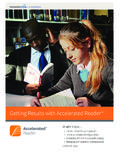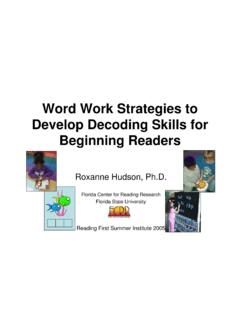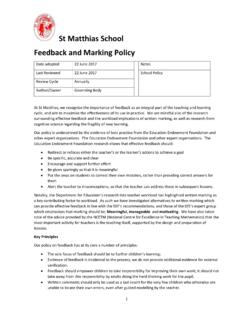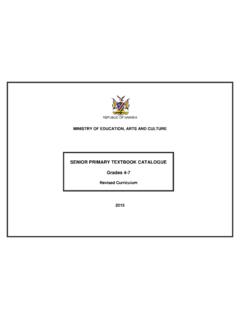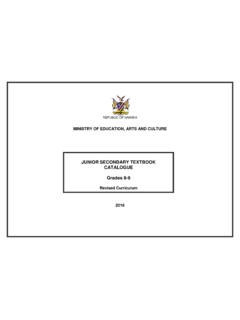Transcription of CHAPTER 3 RESOURCES The Ancient Israelites
1 CHAPTER3 RESOURCESThe Ancient IsraelitesCopyright by The McGraw-Hill Companies, Inc. All rights reserved. Permission is granted to reproducethe material contained herein on the condition that such material be reproduced only for classroom use;be provided to students, teachers, and families without charge; and be used solely in conjunction withDiscovering Our Past: Ancient other reproduction, for use or sale, is prohibited withoutwritten permission from the all inquiries to:Glencoe/McGraw-Hill8787 Orion PlaceColumbus, OH 43240-4027 ISBN 0-07-870295-XPrinted in the United States of 4 5 6 7 8 9 10 113 09 08 07 06 Each CHAPTER RESOURCES Book (CRB) offers blackline masters for a specific CHAPTER of Discovering Our Past: Ancient description of each of the many CHAPTER activities available to youin this book can be found on page v.
2 A complete answer key appearsat the back of this book. This answer key includes answers for allactivities in this book in the order in which the activities Credits: Page 39: Stock Montage/SuperStock; page 40: Erich Lessing/Art Resource,NY; page 41: Stock Montage/SuperStock; page 42: Scala/Art Resource, NY; page 43: Dave Bartruff/CORBISiiiTo the Teacher .. vGuided Reading Activity 3-1 The First Israelites .. 1 Guided Reading Activity 3-2 The Kingdom of Israel.. 2 Guided Reading Activity 3-3 The Growth of Judaism .. 3 Content Vocabulary Activity 3 The Ancient Israelites .. 5 Academic Vocabulary Activity 3 The Ancient Israelites .
3 7 Analysis Skills Activity 3 Assessing and Interpreting Sources .. 9 Universal Access Activity 3 The Kingdom of Israel.. 13 Reading Skills Activity 3 Making Connections .. 15 Language Arts Activity 3 Analyzing Character in Literature .. 17 Writing Activity 3 Responding to Literature .. 21 Time Line Activity 3 The Political Structure of Israel and Mesopotamia (1800 500 ) .. 23 Critical Thinking Skills Activity 3 Identifying the Main Idea .. 25 Chart, Graph, and Map Skills Activity 3 Interpreting a Family Tree .. 27 Geography and History Activity 3 The Religious Center of the Ancient Hebrews.
4 29 Economics and History Activity 3 Income Tax and You.. 31 Citizenship and Service Learning Activity 3 Interviewing Immigrants .. 33 Step Into World History 3 Evening News of the Ancient Israelites Teaching Strategies .. 35 Evening News of the Ancient Israelites Simulation Sheet 1.. 37 Evening News of the Ancient Israelites Simulation Sheet 2.. 38 Table of ContentsTable of ContentsivBiography Activity 3 ANoah .. 39 Biography Activity 3 BAbraham .. 40 Biography Activity 3 CDaniel .. 41 Biography Activity 3 DMoses .. 42 Biography Activity 3 EYohanan ben Zaccai .. 43 Primary Source Reading 3 Exodus 3:1 12.
5 45 World Literature Reading 3 Psalm 23.. 47 Answer Key .. 49 Table of ContentsTable of ContentsvChapter ResourcesGlencoe s CHAPTER RESOURCES are packed withactivities for the varied needs of all of your stu-dents. They include the following activities:These activities provide help for students whoare having difficulty comprehending the studenttextbook. Students fill in missing information inthe guided reading outlines, sentence completionactivities, or other information-organizing exer-cises as they read the review and reinforcement activities helpstudents to master unfamiliar content terms usedin the student textbook.
6 The worksheets empha-size identification of word meanings and providevisual and kinesthetic reinforcement of vocabu-lary of academic words, combined withcontinued acquisition of general words, can sig-nificantly boost students comprehension level ofacademic texts. These activities provide explicitinstruction in teaching word parts, word relation-ships, grammar, and other lexical informationabout academic activities are designed to help studentslearn to think like an historian. The activitiesfocus on such skills as learning how to thinkchronologically and spatially, detecting historicalpoints of view, and interpreting historical activities give you an opportunity to dif-ferentiate your instruction, addressing the differ-ent types of learners in your classroom.
7 Teachingstrategies offer activities for these differentiatedlearning styles: English Learners, AdvancedLearners, Below Grade Level, Special Education,Logical/Mathematical, Verbal/Linguistic,Visual/Spatial, Kinesthetic, Auditory/Musical,Interpersonal, Intrapersonal, and reinforcement activities correspond tothe reading skill lessons presented in each chapterof the student textbook. The activities give stu-dents the opportunity to gain additional practiceat such reading skills as monitoring, inferring,and understanding cause and activities provide practical applicationsof written and oral English language are given instructions on various lan-guage arts skills and asked to apply these skills tohistorical content.
8 Examples of language artsskills include using speaking techniques to sus-tain audience interest, determining the meaningof unknown words, analyzing characterization inliterature, delivering narrative presentations, anddelivering persuasive activities help students develop andpractice writing skills. They are designed to helpstudents not only to increase their writing skills,but also to enable them to apply, relate, interpret,analyze, compare, organize, and write about his-torical facts and the TeacherTo the TeacherviTo the TeacherTo the TeacherThese activities are designed to reinforce thedates of major events in world history and to helpstudents learn the chronological order of thoseevents.
9 Each activity includes a time line labeledwith events and dates. Students answer questionsbased on the time thinking skills are important to stu-dents because they provide the tools to live andwork in an ever-changing world. These activitiesshow students how to use information to makejudgments, develop their own ideas, and applywhat they have learned to new interpret and organize information incharts, graphs, and maps. These activities aredesigned to help students learn visually and tostimulate critical thinking interdisciplinary activities help studentsbecome familiar with the role that geography hasplayed in history.
10 Students are given the opportu-nity to analyze and interpret maps in relation tohistorical interdisciplinary activities give studentsan understanding of the impact of economics onhistory. Applied to current situations, students arefamiliarized with economic terms and activities are designed to involve stu-dents in grassroots community projects that mayhave national or international implications. Theservice learning projects help students under-stand how history affects their own lives on adaily extended activities are designed to givestudents an idea about real life occurrences in his-tory that they can feel a part of to make historycome alive!
